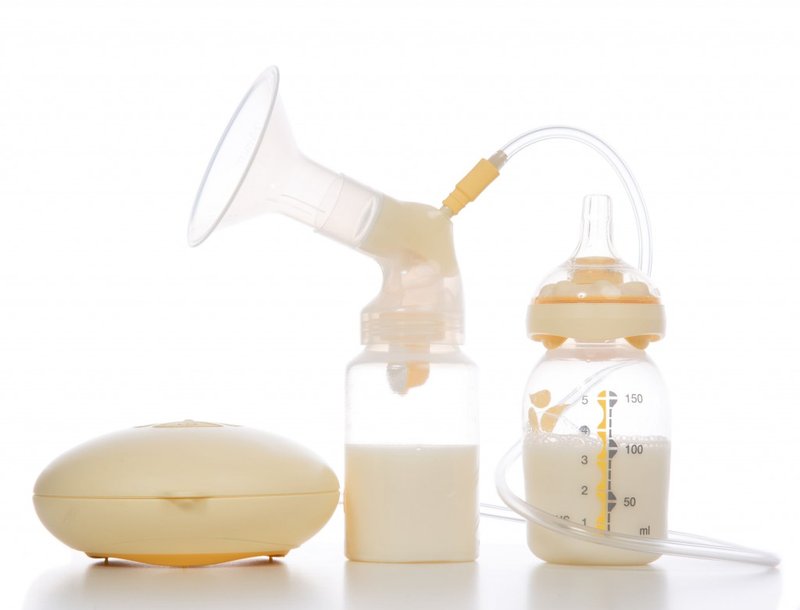Blog
How to choose a breastmilk pump

Returning to work? Looking to create a supply of milk for your dear partner to share the joy and responsibility of feeding your baby? Are you dealing with clogged ducts? Whatever the reason, after you’ve been nursing for a while, you may want to consider purchasing a breast pump. There are many different pumps on the market that vary in usability, so how do you know which one is right for you? Experts from the Mayo Clinic, suggest nursing moms consider the usage frequency, cost, and length of time they are able to pump.
What’s Your Pumping Frequency?
Should you go with a manual breast pump or an electric one? First, determine your pumping frequency. This will help you figure out whether you need a manual breast pump or should invest in an electric one. If you want a pump to get milk for an occasional bottle-feeding, a less expensive manual pump could be your best bet. However, if you plan on going back to work and pumping often, the electric pump is definitely worth the investment. While a little more expensive, they are also easier to use, and more effective. Another consideration is how much time you will have to pump. Do you need to do it as quickly as possible, like on a lunch break, or between flights? If you’re going back to work, or face a situation where time is of the essence (say, traveling with baby), you might want to invest in an electric breast pump that allows you to pump both breasts at the same time. Many women take advantage of their "down" time as a passenger and use a double pump that plugs into a car's power source.
What’s Your Budget?
Should you rent or purchase a breast pump? This really depends on your budget. According to the Mayo Clinic, manual models generally cost less than $50 whereas electric pumps could cost $250 or more. You can purchase a breast pump from most medical supply or department stores.
TIP: Add a breast pump to your baby shower registry.
If you’re going to invest in an electric pump, you may want to consider renting one to test it out before you take the plunge. You can also rent a hospital-grade electric breast pump from a hospital or medical-supply store. When renting, be sure to factor in the cost to purchase a pumping kit, which will attach the pump to your breasts. Also, be sure to check your healthcare insurance plans - most cover the cost of buying or renting a pump.
TIP: Learn how Prolacta reimburses up to $300 for breastmilk donations that could go into purchasing your breast pump of choice! Click here to learn more (see website for specific terms and conditions).
Safety First
While it might be tempting to borrow a breast pump or buy a used one, be sure to check for sterility. According to the Baby Center, “Breastmilk can carry bacteria and viruses – including hepatitis, HIV, and cytomegalovirus – that can contaminate these pumps, and pass an infection to you and your baby. Because droplets of milk can get into the internal parts of these pumps, using your own collection kit doesn't necessarily make them safe to use.” However, hospital-grade breast pump rentals are designed for multiple users and don’t have this problem. They’re specially designed so breastmilk won’t get inside. Just remember, as mentioned above, you will need to buy your own pumping kit. A few other safety tips from Baby Center: There are a variety of breast pumps available, so you are sure to find one to suit your specific needs.
- When you use only one side of a double pump, be sure to seal the side you're not using. If you don’t, it could reduce the pump's suction, which can lead to a drop in breast milk production.
- Choose the right size breast shields so that when you pump, your nipple doesn't rub along the shield's chamber, which could hurt your breast, and cause sore or cracked nipples.
- Clean your pump parts with mild soap and warm water if you don’t plan on pumping again within a few hours. When you clean it, take all the accessible parts apart, and be sure you thoroughly clean them all.
- Clean milk residue in the tubes. Most of the time, you can use warm water with a mild soap. Make sure you dry the tubes completely before you put them back on the pump.
TIP: If your expecting, take the time before delivery to become acquainted with the various pumps that are available. Discuss pumps and pumping with your prenatal class instructor as well.
In the end it comes down to what works best for you.
